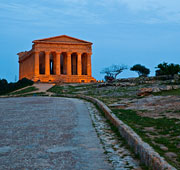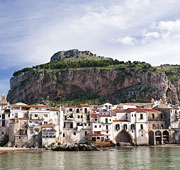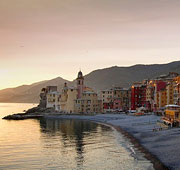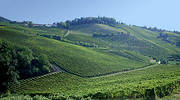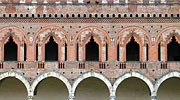The Lombarda Salt Road
Oltrepò Pavese: an itinerary to complete on foot, on horseback, or by mountain bike.
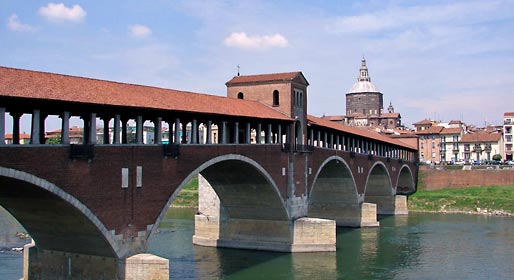
The Via del Sale, the ancient Lombarda salt road, traverses the entire length of Oltrepò Pavese, from Pavia to Genoa.
This historic thoroughfare links the regions of Lombardy, Liguria, Emilia Romagna, and Piedmont and has greatly contributed to the creation of a shared identity. Much of the road snakes through the valley of the river Staffora, through an unspoilt landscape of woods, medieval towns and castles.
During their journey, travelers have every opportunity to stop off at one of the traditional inns or romantic little hotels nestling between the hills of Oltrepò.
The castle, cathedral and charterhouse of Pavia
The elegant city of Pavia has conserved much of its medieval aspect. Many of the city's most important edifices are enclosed within the historic center, buildings such as the Palazzo degli Eustachi, the Collegio Borromeo, the University and the Visconteo Castle, home to the famous Malaspina art museum.
In the summer, Pavia's Visconteo Castle transforms into a spectacular venue for cultural events and concerts
The city's main meeting place, Piazza della Vittoria, commonly referred to as Piazza Grande is considered to be one of the most beautiful squares in Italy. Here, in the shadow of the cathedral, under the large colonnades overlooking the square, any number of fashionable bars, restaurants and boutiques can be found.
In the immediate vicinity of the city, is one of the finest examples of Italian Gothic architecture: the extraordinarily beautiful Charterhouse of Pavia, dating back to the XIV century and commissioned by Gian Galezzano Visconti, the first Duke of Milan.
The heart of Oltrepò Pavese
Voghera, the center of Oltrepò Pavese's farming and wine producing activities, is surrounded by hills on which grapes used to create some of Italy's highest quality wines are grown.
Among the many historic edifices in the town, the most noteworthy are the Visconteo Castle, Palazzo Beltrami, and Palazzo Gounela, this latter now used as town hall.
Paying a visit to Varzi
Varzi provided an important stopping station on the Via del Sale in the medieval period. Those wishing to transit were obliged to pay duties to the all powerful Malaspina family who controlled the entire area. Varzi still bears the signs of the immense prosperity enjoyed in that era.
Access to the historic center is via Porta Sottana to the west and Porta Soprana to the east. Between the two towers, lie the Churches of the Rossi and of the Bianchi, named after the confraternities who once attended them.
Varzi's historic center is lined with colonnades under which merchants and their horse drawn carts, transporting salt from Genoa, used to rest
The medieval Castle and hamlet of Oramala lie within easy reach of Varzi. The stronghold was given to the noble Malaspina family by none other than the great Emperor Frederick Barbarossa himself. One of the most imposing and best defended castles in the whole of the Staffora Valley, Oramala, dominates the surrounding landscape for many kilometers from its hilltop.
San Sebastiano Curone and Monte Chiappo
From Piedmont, the Via del Sale descends towards the sea, passing through the characteristic medieval town of San Sebastiano Curone, which also has a well conserved castle and any number of other notable historic buildings.
The summit of Monte Chiappo is accessible to visitors of all ages, thanks to the chairlift which starts from Pian del Poggio
Monte Chiappo is the highest point on the Via del Sale, and the meeting place of the borders of Piedmont, Lombardy, and Emilia Romagna. From the mountain's green summit, just over 1600 meters above sea level, there is a splendid view of the Maritime Alps and the Ligurian sea.
Itineraries
Main destinations
Hotels in the area
- Useful links
- Lombardy
- Pavia Hotels
- Oltrepò Pavese Hotels
- Lombardy (all hotels)

